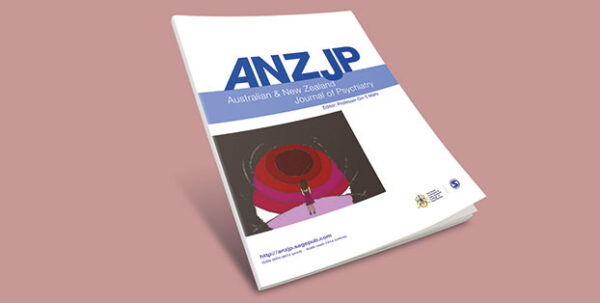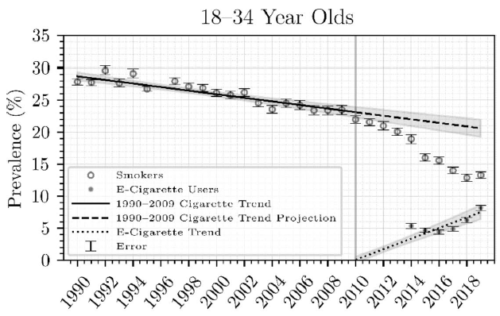
Vaping is rare in young adult Australian non-smokers and is reducing smoking – study
Posted on March 29, 2023 By Colin
A RECENT AUSTRALIAN STUDY has found that current vaping by young people (mostly young adults) who have never smoked is rare. Most vaping is by current and past smokers and a majority are using vaping to quit or cut down deadly cigarettes. Despite the obvious spin in the media, the results of this study are good news.
In the study published in the anti-vaping Australian and New Zealand Journal of Public Health, of 1,006 15-30-year-olds (mostly young adults),
only 13% (129/1,006) vaped once or more in the last month. Of these, only 8 were cigarette-naive, 56 were past smokers and 65 were current smokers
Of the current or previous smokers, 57% vaped to cut down or reduce smoking. Thirty three percent of young people had vaped in the past and now ceased, confirming how vaping is often due to curiosity and experimentation, is usually short-term and is of little or no public health importance.
This data is welcome as most reports of vaping in young people are anecdotal and little hard Australian evidence is available on vaping rates.
Importantly, the study does not support the claim that vaping is creating a new generation addicted to nicotine. In fact, the opposite is more likely
Little harm to non-smokers
Vaping exposes users to very low doses of chemicals. A small number become nicotine-dependent and some (very few) may develop respiratory symptoms. There are possible unknown harms from long-term vaping, but these are likely to be very small, and far less than from smoking.
However, vaping by young non-smokers is rare and usually infrequent and is of little public health importance. In this study, only 8/1006 teens and young adults vaped once or more in the last month
Most importantly, there is no evidence that vaping causes young people to take up smoking. A recent study found that young people who try vaping are no more likely to be regular cigarette smokers two years later than young people who did not vape.
Benefits to young smokers
Vaping is the most effective quitting aid available and is nearly twice as effective as nicotine replacement therapy. Smokers who quit with vapes will dramatically reduce their health risk. Those who reduce smoking will have reduced exposure to toxins and less smoking-related harm. Many of these ‘dual users’ will go on to quit over time.
Smoking is the problem
The study found that 16% of young people smoke deadly cigarettes. The authors of the study recommend educating smokers about NRT as a quitting method. However, young people are unlikely to use NRT and are already choosing vaping to quit. It makes no sense to encourage NRT which is a far less effective quitting aid than vaping. It is well accepted that smokers should quit as quickly as possible with the most effective quitting aid for them.
Should flavours be banned?
As for adults, fruit flavours were the most popular flavours for young people. The authors perversely advise a ban on flavours. This will only reduce the appeal of vaping for youth and adults and undermine its success as a quitting aid. In adults, flavours make vaping more appealing, increase quit rates and reduce relapse. Banning flavours that specifically appeal to young people is reasonable but a ban on flavours more widely will do more harm than good.
Availability of vapes
The authors perversely recommend reducing the availability of vaping to young adults to reduce uptake. However, this study shows that vaping is a popular quitting aid for young adults. Commonsense would suggest that it should be encouraged to help them quit, as it is in New Zealand and the United Kingdom.
Furthermore only 7% of users had a prescription and are obtaining and using vapes illegally, with most using illicit, unregulated products
This highlights the failure and harms of Australia's prescription-only regulatory model. A better approach would be to make regulated vapes available legally as an adult consumer product to help smokers quit
The inevitable spin
In responding to this study, Tony Slevin of the Public Health Association of Australia said “This is a public health disaster unfolding before our eyes”, citing “evidence of respiratory problems cardiovascular issues, exploding vapes, and issues with access and poisoning among very small children. and as well as the quality and safety issues. This is scaremongering. The harms described are either non-existent or very rare indeed.
In fact, this study shows how vaping is more likely to be improving the health of young people. Other studies have shown that vaping is diverting smokers away from deadly smoking
For example, the NSW Population Health Survey showed that vaping rates were highest in the young adult age group. This age group had the fastest rate of decline in smoking. Similar results were found in the US.

In an article in the Guardian, the author said, “vaping was becoming normalised among teenagers’ However, there no evidence of this is in this study. Vaping is mostly infrequent, is rare in non-smokers, is less frequent than smoking and is used to being used to replace it.
Reference
Pettigrew S. E-cigarette attitudes and use in a sample of Australians aged 15–30 years. ANZJPH 2023